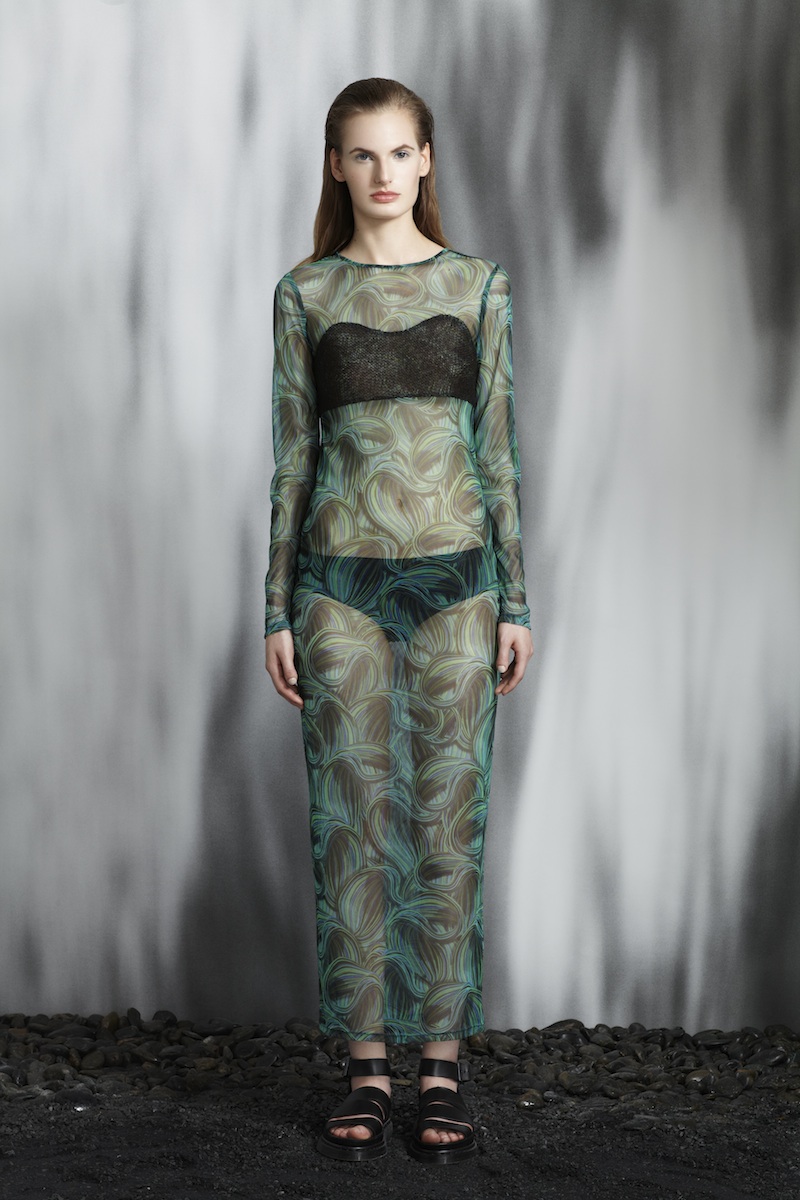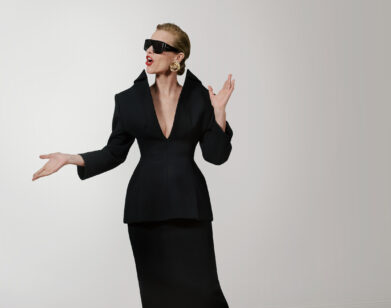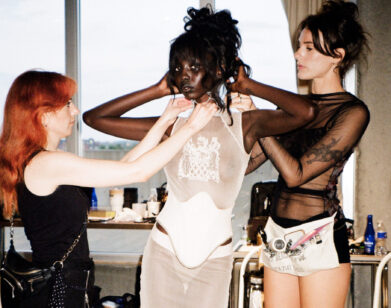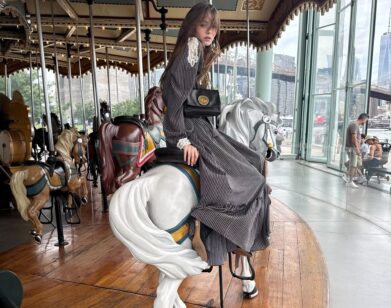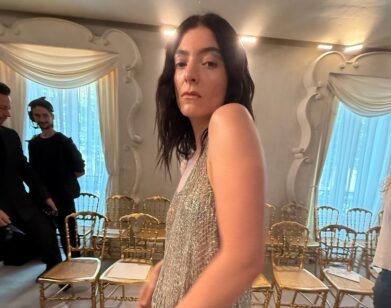Jonathan Cohen Finds His Sea Legs
Since launching his namesake line in 2011, 28-year-old Williamsburg-based designer Jonathan Cohen has towed a delicate line between uptown polish and downtown edge. His Fall/Winter 2013 collection brought fluorescent-tinged glow-stick t-shirts photographed by friend and collaborator Spencer Ostrander, paired with sensible, Madison Avenue-fit black pencil skirts. Spring/Summer 2013 was all about structured crop tops and boxy, slightly oversized cropped jackets; the prints showed deep maroon and carnation-pink flowers—dead flowers. Cohen’s work balances classic polish (Cohen worked with Oscar de La Renta before breaking out on his own, and the influence is evident)—and, if you look closely enough, a subversive edge.
This season—his fourth to date—Cohen continues the rough-refined balance, and takes the point of reference home. While his family is from Mexico City, Cohen grew up largely on San Diego’s beaches. Spring/Summer 2014 is all about his Cali teenage experiences: time spent by the ocean before and after class, and brushes with La Jolla’s rebel surfer gangs. Prints taken off rusted VW vans are spun onto loose silk dresses; photographs of surfers walking into the waves are miniaturized to look like thin, graphic lines on long-sleeved shirts; and vibrant teal green kelp prints take shape on some not-so-quite nighttime pantsuits.
We sat down with the designer to talk about these inspirations and where he found the prints.
ASHLEY W. SIMPSON: Can you talk about the references for the new collection? How did you come to the surfer gang theme and what inspired you to look to this culture as you first conceived of S/S 14?
COHEN: It started with the book The Pump House Gang by Tom Wolfe. The book takes place in La Jolla, California, where I grew, up so I instantly connected to it. I felt it would be a perfect starting point for Spring ’14 and a collection I could easily connect to. The challenge for me was to take the concept and evolve it so that it felt fresh and different. I loved the challenge of taking this grimy beach culture and elevating it.
SIMPSON: What about The Pump House Gang caught your eye, and how does it relate to your personal experiences in Windansea?
COHEN: Windansea was a block from where I went to high school. The way Wolfe described the culture around the beach was a pretty accurate description of the people I grew up with. Their attitude, speech, and style were so on point. I went back to La Jolla while developing the collection and began to take photos of the area where the book took place. That is when the ideas really started developing.
At one point during the day I was driving along the beach, I parked a block away from the actual pump house and came across a rusting VW Wagon. The top of the car was a rust color and the bottom was a decayed aqua. I could almost imagine the characters of the book hanging out in the car. The color combination felt so fresh to me. I instantly knew I wanted to incorporate this into the collection. That is how the two “Car Rust” prints were created.
SIMPSON: Growing up in La Jolla, what were your early impressions of the area’s surf culture? Are there specific memories of surf gang experiences that you go back to as you think about the evolving Jonathan Cohen woman?
COHEN: I think one memory that always sticks out in my head is parking my car in high school and seeing students change in the parking lot from their wet suits into their school clothes in the early morning. It was so normal at the time to see, but now I look back and just think of how cool that was.
I was always friendly with and admired the female surfers. I love women who can challenge their roles in society. There was something about seeing a woman partake in a male-dominated sport and succeed that I found very inspiring and above all cool. This embodies the woman I design for, she is always challenging social norms and setting her own rules.
SIMPSON: How did you come to the surfboard silhouette?
COHEN: I began to look at images of early ’70s California surf culture. I came across some amazing images of vintage surfboards. I loved the long silhouette of the board intersected with clean, sharp, cool and modern lines that could easily complement a woman’s body.
SIMPSON: What kind of woman do you envision wearing the clothes? If you could see anyone wearing a look from the collection, who would it be?
COHEN: I have always been inspired by women who have succeeded professionally and that have a creative edge. Growing up, I loved Peggy Guggenheim and have always admired Lauren Santo Domingo. I think it is amazing what they have done professionally for themselves, and their style reflects that to me. They dress with such confidence and make it their own. This embodies the Jonathan Cohen woman. Someone who understands the vision we put out, but then takes the pieces we have created and personalize it to their own style. After all, fashion is about individuality!
FOR MORE ON JONATHAN COHEN, VISIT THE DESIGNER’S WEBSITE.

